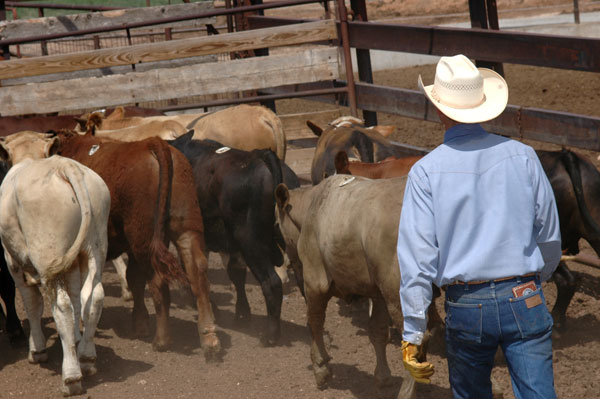Delaying implants on high-risk calves holds the pen back from achieving its performance potential.

Just like that old Fram oil filter commercial, it’s a case of paying for it now or paying for it later. In the case of high-risk cattle, paying for it now turns out to be the much better option, says Chris Reinhardt, Kansas State University (KSU) Extension feedlot specialist.
For quite some time, Reinhardt says, the conventional wisdom has been that it’s better to delay implanting high-risk cattle until the pen’s health status has stabilized and all animals are on full feed.
"The speculation was that calves at high risk of developing respiratory disease would benefit if an implant wasn't given immediately upon arrival at the feedlot, but delayed until after a few weeks’ time,” Reinhardt says. “The idea was to allow high-risk calves to become better acclimated to the feedlot and the new environment in general, as well as to get over any respiratory disease challenges they had upon arrival. Until now, however, there's been no data to support or refute that theory.”
Reinhardt teamed up with KSU veterinarian Dan Thomson, director of KSU's Beef Cattle Institute, in two studies to test the theory.
The first study followed 1,600 high-risk steers at a commercial Kansas feedlot. Half the steers were given the growth-promotant implant immediately upon arrival, and the other half were implanted six weeks after arrival. The researchers monitored the steers’ health and growth rate from arrival through harvest.
“The results indicated that delaying the implants didn't improve any health or performance outcomes over providing the implant upon arrival,” Reinhardt says. “Providing the implant on arrival actually led to a numerical improvement in carcass weight at slaughter.”
That’s because not every animal in a pen of high-risk calves gets sick. “If you have 10% pulls, that means 90% are healthy. Even if you have 30-40% pulls, that means 60-70% of the pen is healthy and on full feed,” he says. “And even if they’re sick, they’re still eating a little. How much are you giving up by delaying the implant?”
The two researchers then conducted the second study to look more deeply into the metabolic factors at play in calves undergoing nutritional stress in the presence or absence of an implant. “We learned that there are certain factors that implants alter. But we also found that nutrient supply and presence of the implant did not interact.”
The results of the second study somewhat confirmed what the scientists found in the first study – that the disease process, and any potential nutrient stress brought on by disease – didn't suppress the activity of the implant given upon feedlot arrival, he said. That suggests that high-risk calves can be implanted immediately upon feedlot arrival with no detrimental impact on health or performance (such as growth and weight gain) outcomes.
About the Author(s)
You May Also Like



